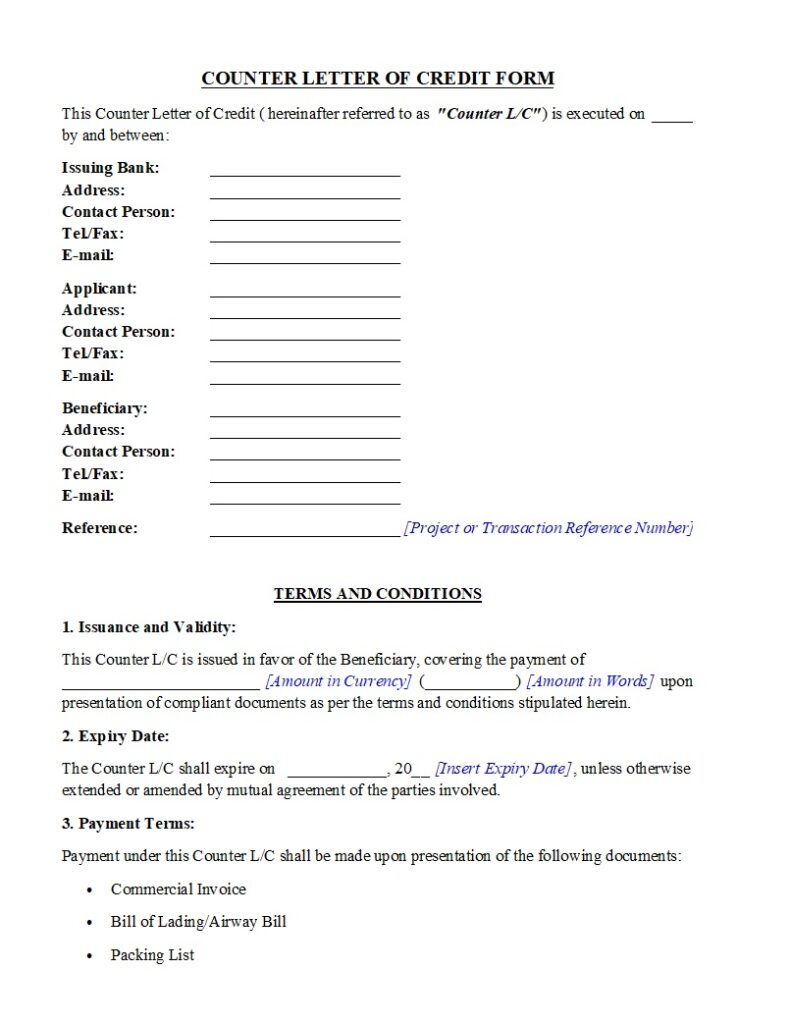Estimated reading time: 2 minutes
A Counter Letter of Credit, also called a Back-to-Back Letter of Credit, is a specialised financial instrument used in international trade. It enables buyers, suppliers, and intermediaries to manage indirect payment arrangements securely. By involving two separate but independent letters of credit, this tool supports multi-party transactions and enhances flexibility in global commerce.
Structure of a Counter Letter of Credit
The arrangement begins with a primary Letter of Credit issued by a buyer’s bank. Based on this primary credit, a second Letter of Credit, known as the Counter Letter, is issued to the supplier through the intermediary. Each Letter of Credit remains independent, but together they create a chain that ensures payment flows correctly across all parties involved.

Purpose and Advantages
The Counter Letter of Credit provides significant advantages in transactions where intermediaries play a key role. It guarantees that the supplier receives secure payment while protecting the intermediary’s commercial position. Additionally, it reduces financial risks by ensuring that payments are conditional on documented compliance with trade terms. As a result, both flexibility and reliability increase for all participants.
Managing Complex International Trade
This financial instrument is particularly useful for complex trade transactions that span different jurisdictions. It accommodates diverse legal frameworks, banking practices, and regulatory requirements. Therefore, it ensures the smooth execution of international deals, even when multiple stakeholders are involved. Furthermore, it enhances trust between parties who may not have direct contractual relationships.
Compliance and Expert Consultation
Because of its complexity, structuring a Counter Letter of Credit requires professional guidance. Financial and legal experts assist in aligning the arrangement with compliance rules and banking standards. Their involvement ensures that risks are managed, obligations are defined, and disputes are avoided. Consequently, businesses using this tool gain both security and operational efficiency.
Check out more sections of our website for related content:
References
- International Monetary Fund (IMF) – Trade Finance and Global Financial Stability Report
- Examines how trade finance instruments, such as back-to-back Letters of Credit, enhance liquidity, stability, and risk management in global commerce.
- Bank for International Settlements (BIS) – Guidelines on Trade Finance and Risk Mitigation
Provides regulatory insight into risk management, banking practices, and compliance standards for multi-party trade finance instruments. - World Trade Organization (WTO) – Trade Finance and SMEs Report
Analyses how trade finance instruments such as back-to-back and counter Letters of Credit support cross-border commercial activity and liquidity.
has been added to your cart!
have been added to your cart!



